7 Key Insights on Mobility Data for Market Research Analysts

7 Key Insights on Mobility Data for Market Research Analysts
Overview
The article "7 Key Insights on Mobility Data for Market Research Analysts" highlights how mobility data can significantly enhance market research and strategic decision-making for analysts. It features the critical importance of accurate data, the transformative advantages of machine learning in analyzing mobility patterns, and the ethical considerations surrounding data use. These elements are essential for understanding consumer behavior and improving operational strategies across various sectors.
Accurate mobility data serves as a foundational feature for market research, enabling analysts to draw meaningful insights about consumer behavior. The advantages of employing machine learning techniques in this context cannot be overstated; they allow for the identification of complex mobility patterns that traditional methods may overlook. Ultimately, the benefits of leveraging such data include improved targeting of marketing efforts and enhanced decision-making processes that can lead to increased operational efficiency.
Furthermore, ethical considerations in data use are paramount. Analysts must navigate the delicate balance between leveraging data for insights and respecting consumer privacy. This awareness not only fosters trust but also ensures compliance with regulatory frameworks, which is increasingly important in today's data-driven landscape.
In conclusion, mobility data is not just a tool but a strategic asset for market research analysts. By understanding its features, advantages, and benefits, analysts can make informed decisions that drive their organizations forward. How might your organization leverage mobility data to refine its strategies? Consider the implications of these insights in your own work.
Introduction
Mobility data has swiftly emerged as a cornerstone for market research analysts, providing invaluable insights into consumer behavior and transportation trends. This dataset features a wealth of information that reflects current mobility patterns, enabling professionals to understand market dynamics better.
As the demand for high-quality datasets continues to rise, analysts find themselves with unprecedented opportunities to leverage this information for strategic decision-making. However, the advantages of mobility data come with complexities, including:
- Data accuracy
- Ethical considerations
- The integration of advanced technologies like machine learning
How can analysts effectively navigate these challenges to unlock the full potential of mobility data? By addressing these issues, they can harness the benefits of informed decision-making and drive impactful results in their organizations.
Initial Data Offering: Access High-Quality Mobility Datasets
The Initial Data Offering (IDO) serves as a pivotal centralized hub for accessing high-quality transportation datasets, which are crucial for market research professionals. This platform features a diverse array of datasets, including:
- Alternative information
- Fundamentals information
- ESG information
Mobility data is essential for interpreting movement trends and understanding consumer behavior. As the transportation information analytics sector is projected to experience significant growth by 2025, leveraging IDO's services allows experts to enhance their evaluations and extract actionable insights that inform strategic decisions. By integrating mobility data into their decision-making processes, organizations can gain a deeper understanding of market dynamics and respond effectively to evolving consumer needs.
Successful implementations of transport information platforms have demonstrated their value in fostering innovation and refining operational strategies, thereby positioning IDO as an indispensable asset for analysts striving to maintain a competitive edge.
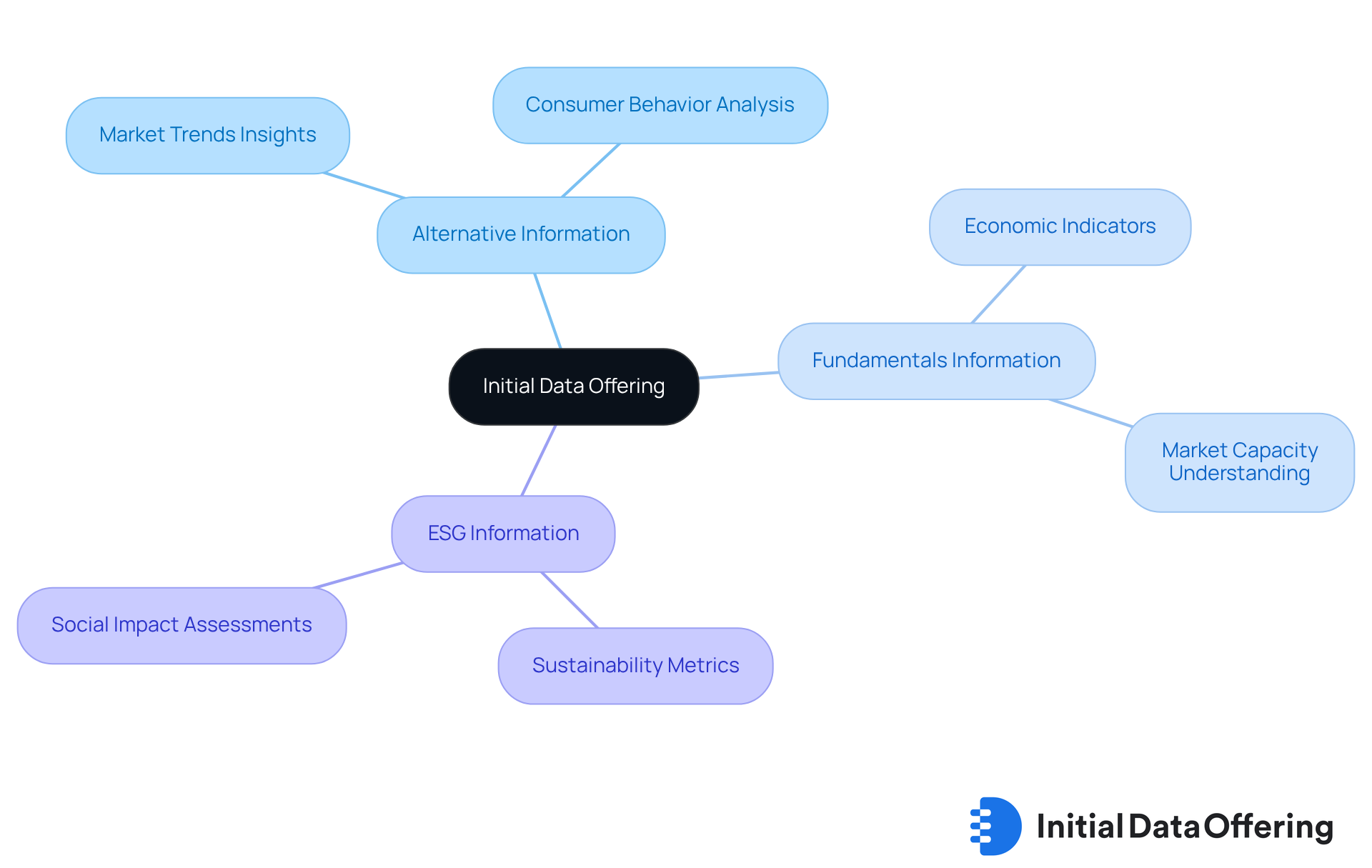
Data Accuracy: The Foundation of Reliable Mobility Insights
Precision is crucial in transportation analysis, as it directly affects the dependability of conclusions drawn from the information. Analysts must apply best practices for information gathering, validation, and ongoing monitoring to ensure that the mobility data they utilize reflects genuine mobility patterns. Regular audits and cross-verification with trusted sources significantly enhance information accuracy. This leads to more reliable market insights, which are essential for informed decision-making.
As W. Edwards Deming famously stated, "without information, opinions are meaningless," underscoring the critical role of precise information. Moreover, Dean Abbott observes that 'no information is entirely pristine, but most is beneficial,' highlighting the continuous challenge of ensuring information cleanliness.
Considering that individuals allocate 60% to 80% of their time attempting to locate information, the significance of efficient information management cannot be emphasized enough. Ultimately, the effect of accurate mobility data on transportation studies influences the conclusions drawn and guides strategic decisions. This establishes precision as a cornerstone of effective market research, emphasizing its importance in navigating complex datasets.
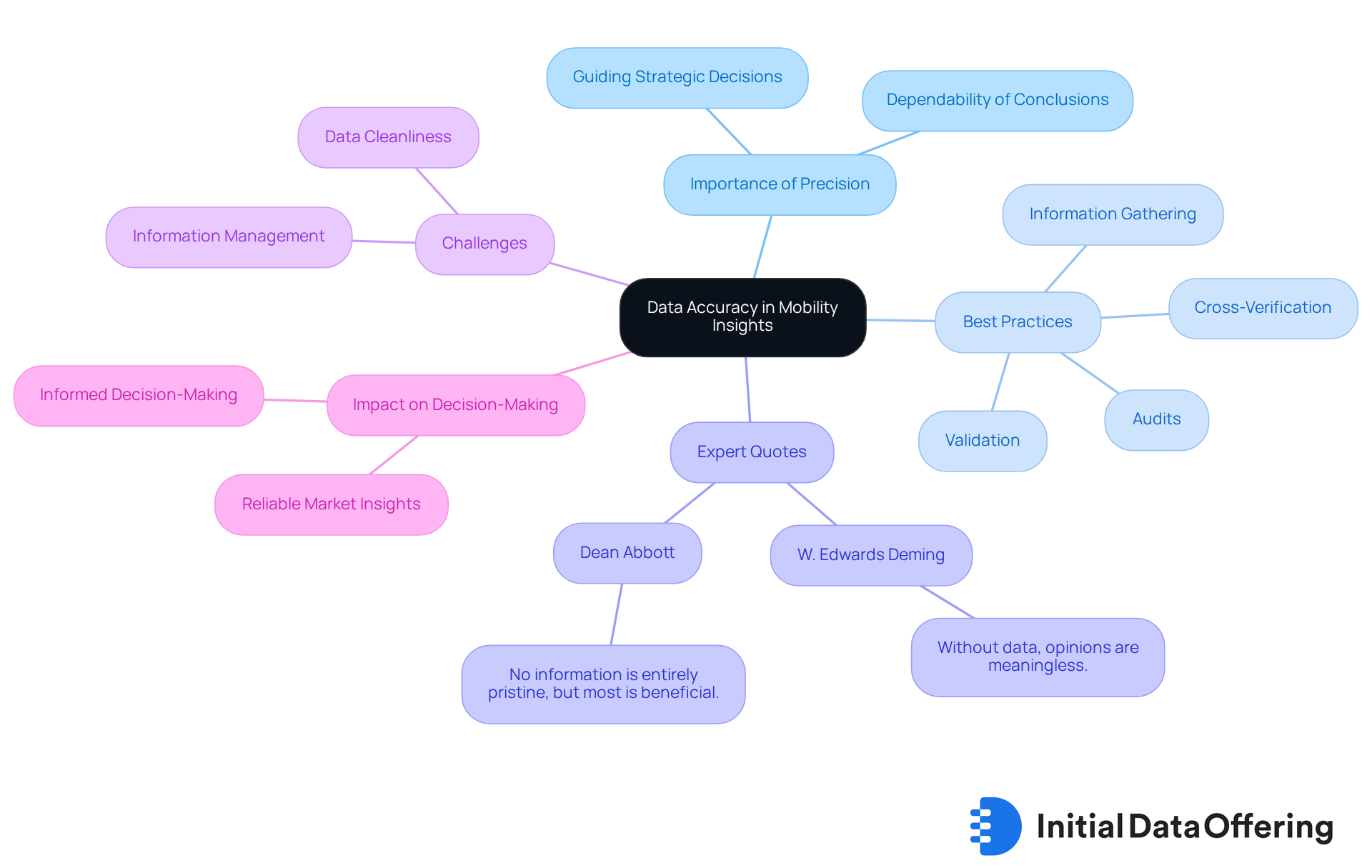
Machine Learning: Transforming Mobility Data Analysis
Machine learning is fundamentally transforming transportation information analysis, allowing researchers to identify complex patterns and trends that traditional techniques often overlook. By employing methods such as predictive modeling and clustering, analysts can categorize data effectively, forecast future movement trends, and improve decision-making processes.
For example, predictive modeling has played a crucial role in optimizing traffic flow; Singapore's Intelligent Transport System achieved a remarkable 40.64% reduction in wait times at intersections and a 21.48% decrease in vehicle emissions by dynamically adjusting signal timings based on real-time data. Furthermore, the Surtrac system in Pittsburgh has demonstrated a 25.79% decrease in average travel durations, showcasing the tangible benefits of machine learning in urban transportation.
Additionally, machine learning algorithms have reached over 90% accuracy in detecting traffic congestion, enabling cities to proactively manage urban movement. By integrating machine learning into their analytical frameworks, market research professionals can significantly enhance their capacity to extract actionable insights from complex mobility data.
To effectively leverage these insights, data professionals should consider adopting predictive modeling techniques in their analyses, driving more informed strategies and solutions in urban planning.
How might these advancements in machine learning reshape your approach to data analysis in transportation?
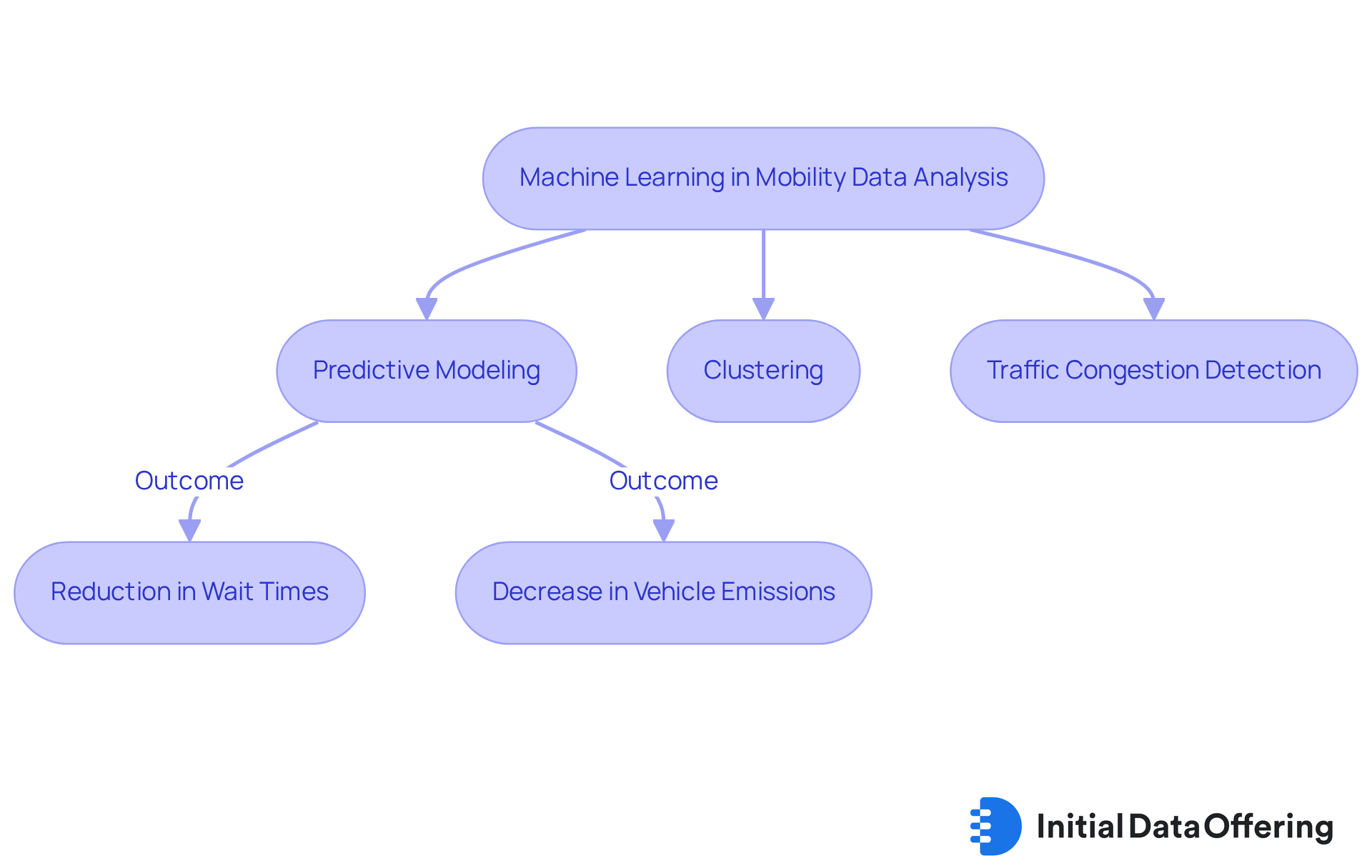
Privacy Considerations: Navigating Mobility Data Ethics
As mobility data becomes increasingly prevalent, it is crucial for experts to address the ethical implications of its use. Privacy considerations are of utmost importance, especially when handling sensitive data regarding individuals' movements. Analysts are encouraged to adopt best practices for anonymization and to ensure compliance with relevant regulations, such as the General Data Protection Regulation (GDPR). By prioritizing ethical information practices, analysts not only uphold public trust but also mitigate the risk of potential legal repercussions.
How can we ensure that our approach to mobility data is both ethical and responsible? By focusing on these principles, we can foster a more secure and trustworthy environment for all stakeholders involved.
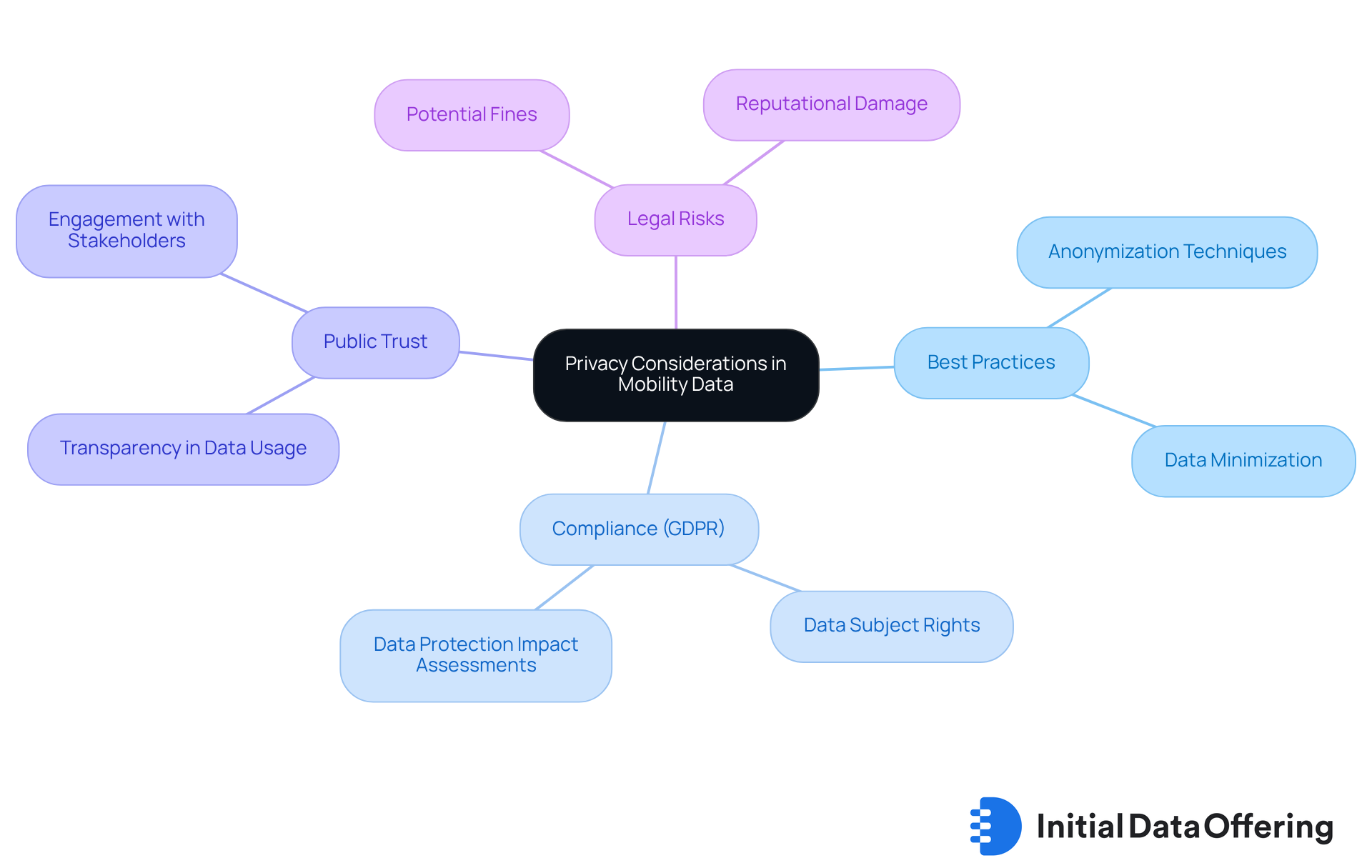
Open Data Standards: Advancing Sustainable Transportation
Open information standards serve as a cornerstone for enhancing sustainable transportation by fostering transparency and accessibility. By adopting standardized information formats, organizations can facilitate more efficient sharing of mobility data, which in turn promotes collaboration among diverse stakeholders. This openness simplifies information exchange and addresses challenges faced by open information providers, such as dispersed information management and resource limitations. For instance, initiatives like the Global Forest Watch illustrate how accessible information empowers communities to advocate for environmental policies, underscoring the broader significance of transparency in information.
Moreover, the sustainability of open information ecosystems hinges on user-driven, circular, and inclusive characteristics, supported by open information intermediaries that enhance the supply and utilization of data. Analysts can leverage this wealth of standardized mobility data sources to refine their research and evaluations, ultimately fostering informed decision-making within the realm of sustainable transportation.
How might your organization utilize these standards to improve its practices? The implications of adopting such frameworks are profound, paving the way for a more sustainable future.
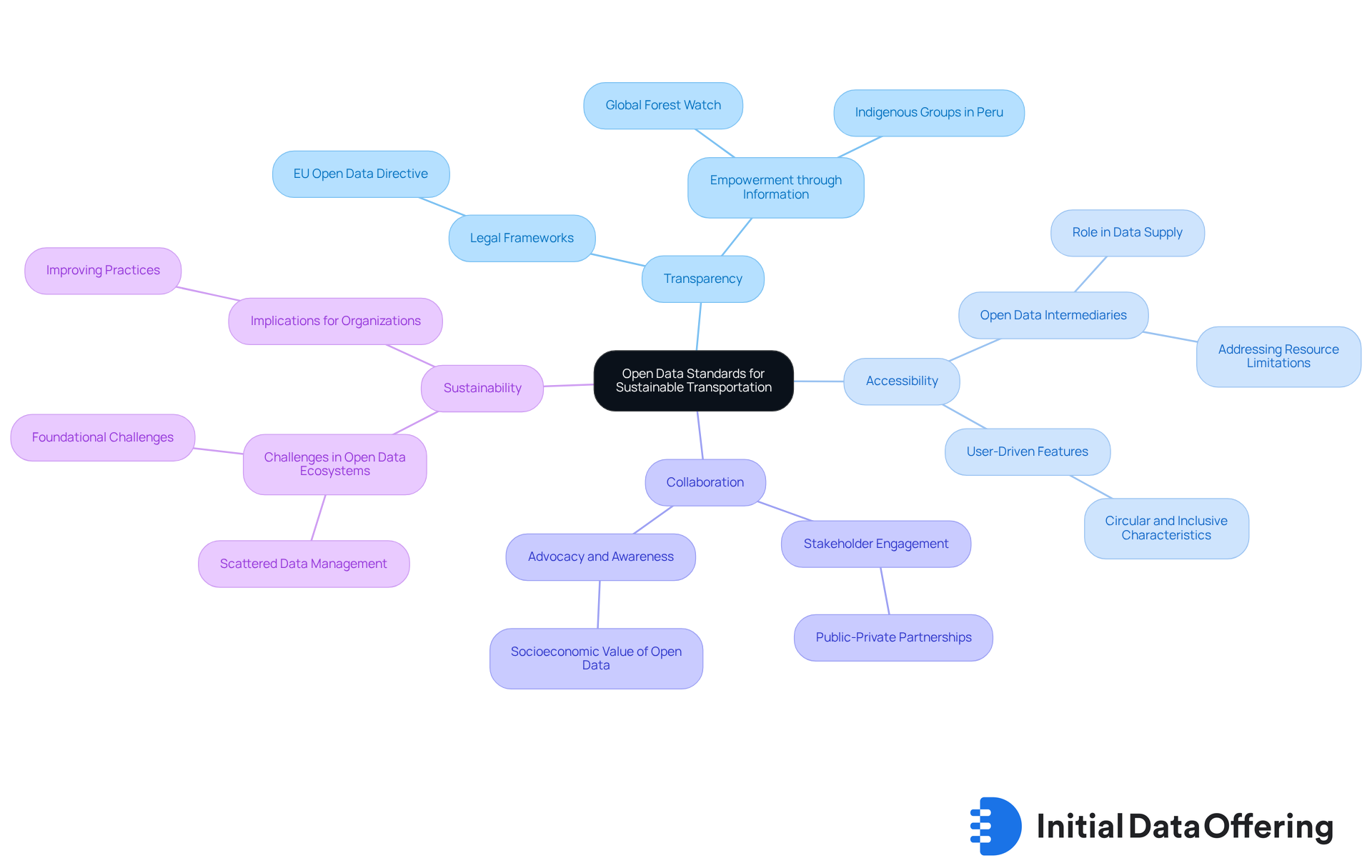
Interpreting Complex Data: Overcoming Mobility Analytics Challenges
Interpreting intricate movement information presents considerable challenges for evaluators, primarily due to information fragmentation and varying information quality. Statistics indicate that companies lose approximately $5.2 million in revenue each year due to underutilized information, highlighting the critical need for effective information management in mobility data analytics. As Jay Baer points out, 'the information is certainly present, but not everyone is utilizing it,' which highlights the urgency for researchers to leverage available insights effectively.
To address these challenges, analysts should adopt a systematic approach that involves utilizing advanced visualization tools, which can convert complex datasets into clear, actionable insights. Tools such as Tableau and Power BI are particularly effective in enhancing transportation information analysis by providing user-friendly interfaces for exploration and visualization.
Optimal techniques for visualization in mobility data analytics focus on clarity and relevance. Analysts should prioritize the quality of information over quantity, ensuring that visualizations accurately reflect underlying trends and patterns. Collaborating with analysts can further enhance the analytical process, as their expertise in machine learning methods can uncover deeper insights from complex datasets. As Ben Schneiderman emphasizes, "Visualization gives you answers to questions you didn’t know you had," illustrating the potential of these tools to uncover previously unconsidered insights.
By implementing these strategies, analysts can effectively analyze mobility data, which facilitates informed decision-making and strategic planning.
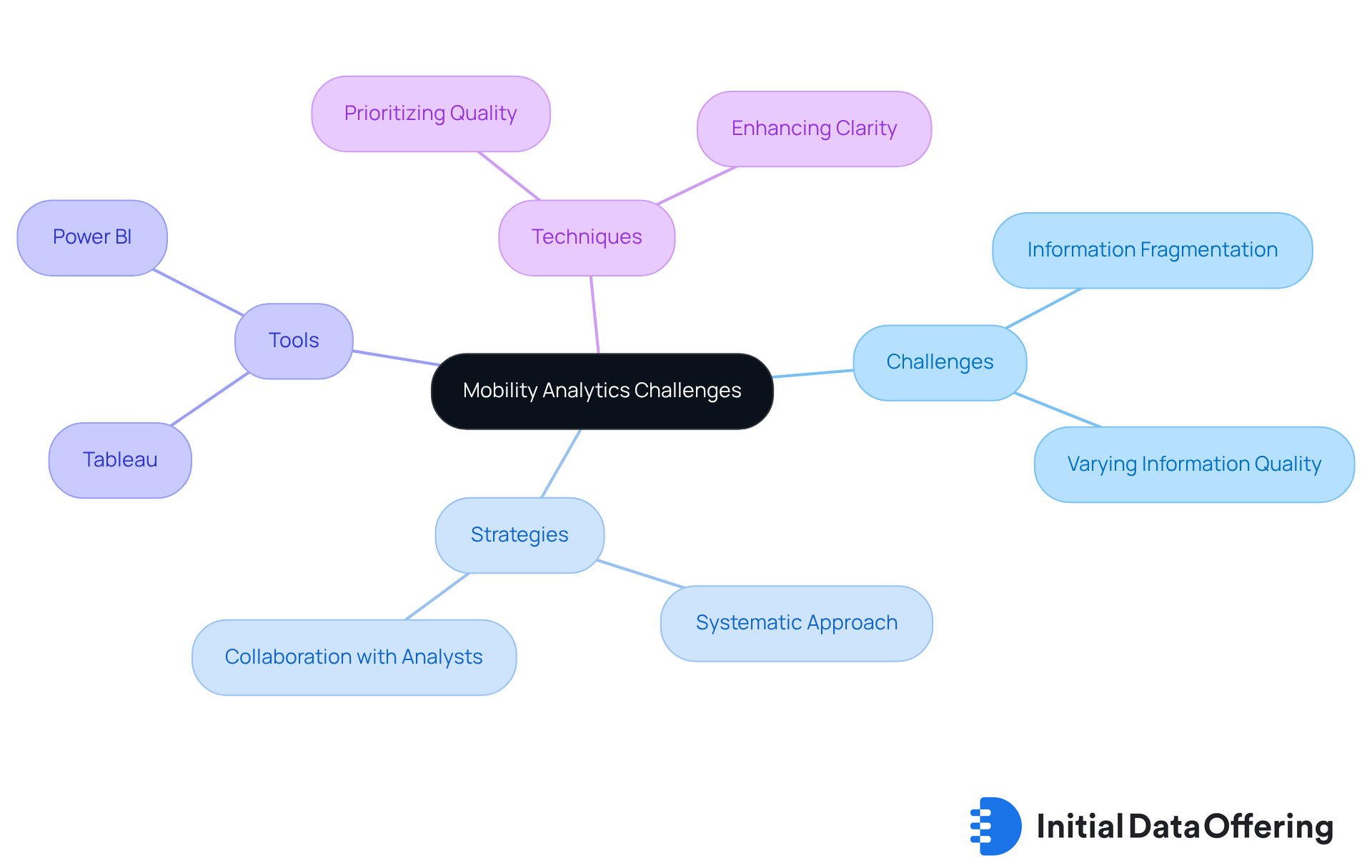
Geographic Targeting: Enhancing Humanitarian Aid with Mobility Data
Mobility data is a crucial feature in enhancing geographic targeting within humanitarian assistance efforts. By analyzing mobility data, including movement patterns and population density, organizations can pinpoint areas that are most in need of support. This data-driven approach not only facilitates a more efficient allocation of resources but also ensures that interventions are targeted effectively. As a result, the overall effectiveness of humanitarian responses is significantly improved.
How can organizations leverage this information to optimize their strategic planning? Analysts can utilize mobility data to guide their efforts, ultimately enhancing aid distribution in crisis situations.
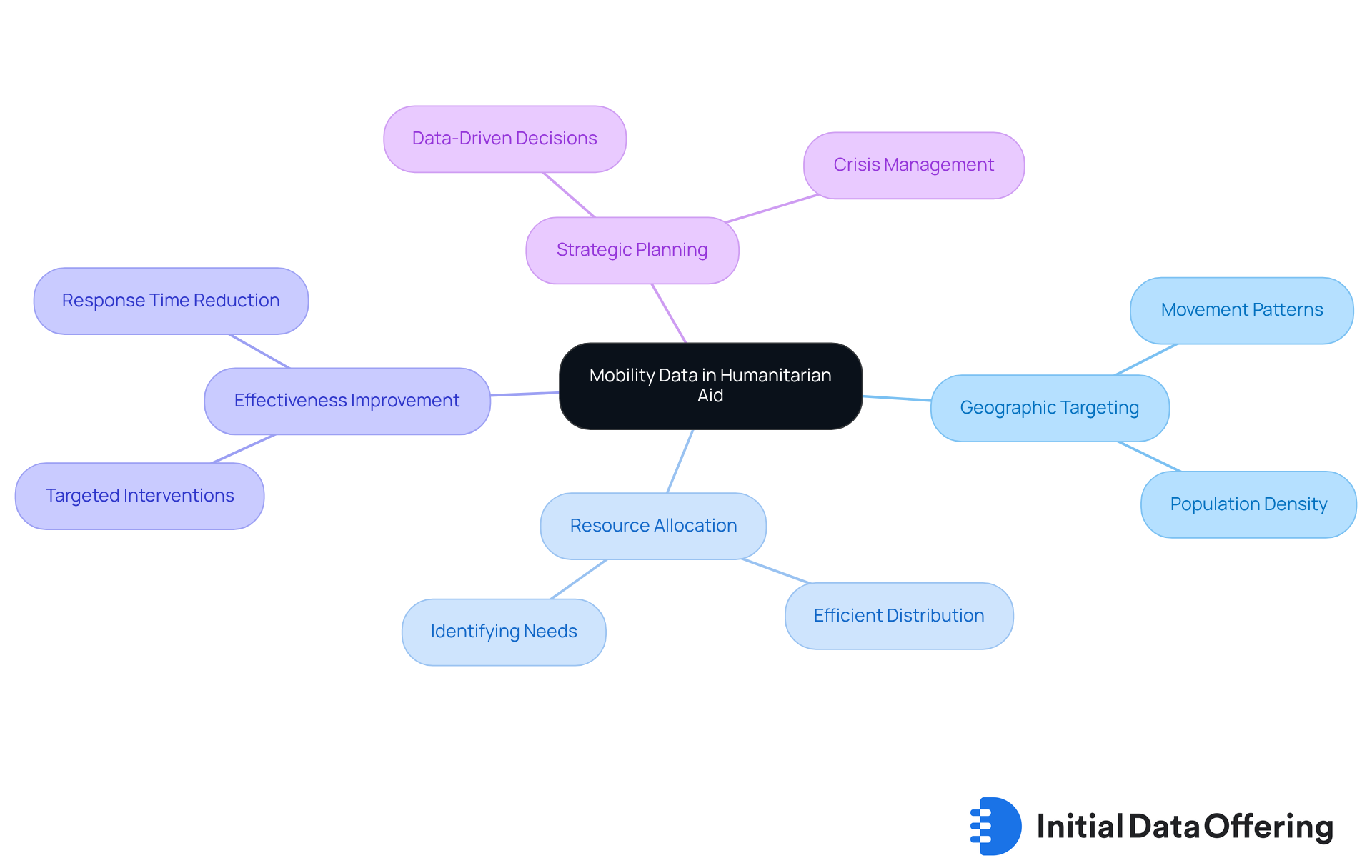
Distributed Mobility Databases: Enhancing Data Accessibility
Distributed transport databases enhance information accessibility by allowing multiple users to access and analyze data simultaneously. This architecture not only supports real-time information sharing but also fosters collaboration among analysts. As a result, organizations can conduct more comprehensive analyses that lead to better insights. By utilizing distributed databases, stakeholders can ensure that mobility data is readily available, which is crucial for timely decision-making. Ultimately, this capability fosters innovation in transportation solutions, enabling organizations to adapt and thrive in a dynamic environment.
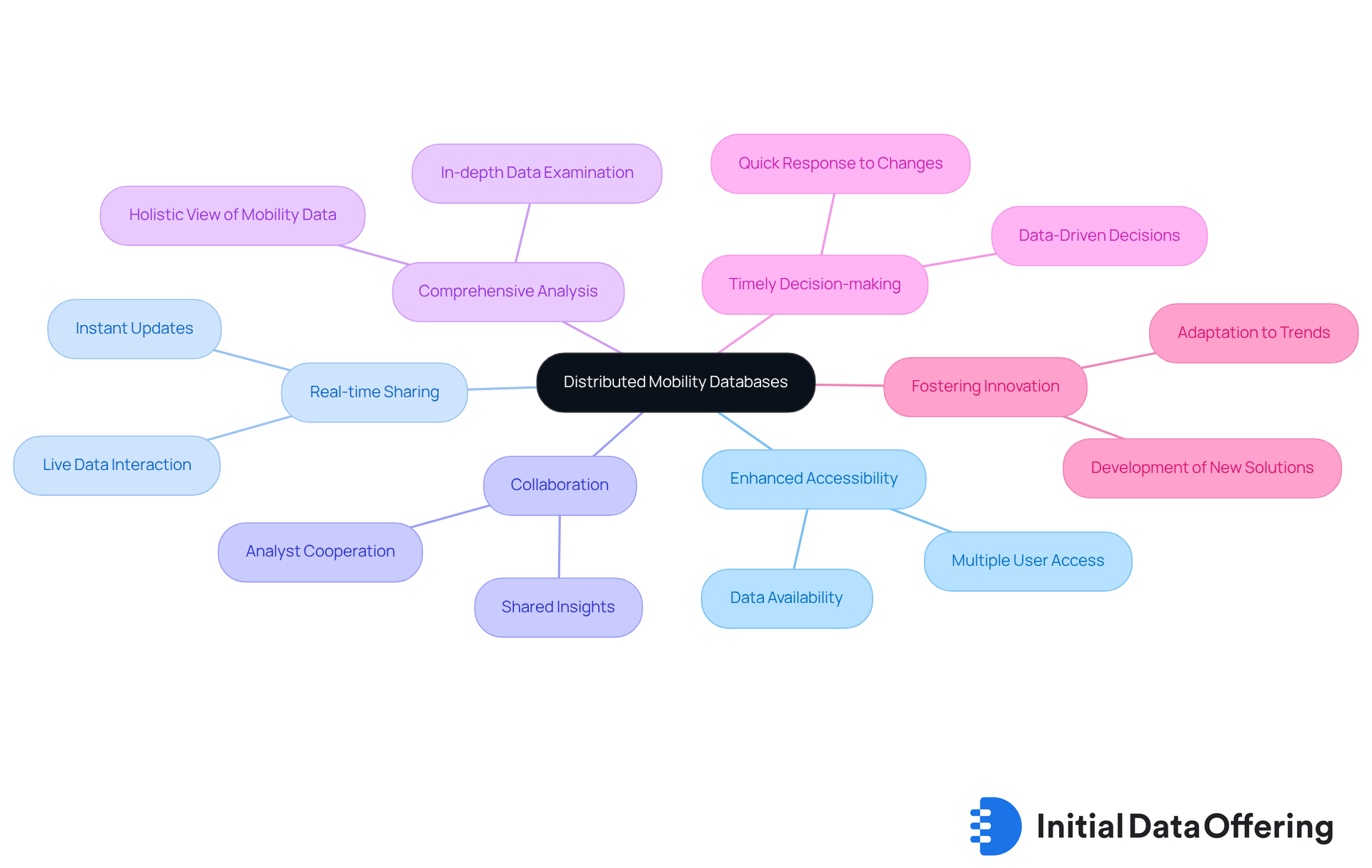
Mobility Analytics: Driving Strategic Planning with Data Insights
Mobility data analytics plays a pivotal role in shaping strategic planning across diverse sectors. By utilizing mobility data, organizations can uncover trends, assess market opportunities, and make informed decisions that align with their strategic goals. For instance, cities such as Bogota have employed transportation analytics to address significant traffic congestion, where drivers waste an estimated 191 hours annually on the road. This data-driven approach, which incorporates mobility data, enables planners to identify congestion hotspots and propose effective solutions, enhancing operational efficiency and improving customer experiences by tailoring services to meet user demands.
Moreover, companies can leverage mobility data to refine their marketing strategies. By analyzing patterns in consumer movement, organizations can pinpoint potential market segments and optimize their outreach efforts. The integration of various information types, including mobility data, GPS, and social media insights, provides a comprehensive understanding of consumer behavior, leading to more effective decision-making.
The impact of movement information perspectives on business outcomes is substantial. Companies that effectively harness these insights can enhance their operational strategies, resulting in improved customer satisfaction and increased market share. As the global population continues to migrate to urban areas, the demand for innovative transportation solutions will only grow, underscoring the necessity for analyzing and acting on mobility data as a crucial aspect of effective business strategy.
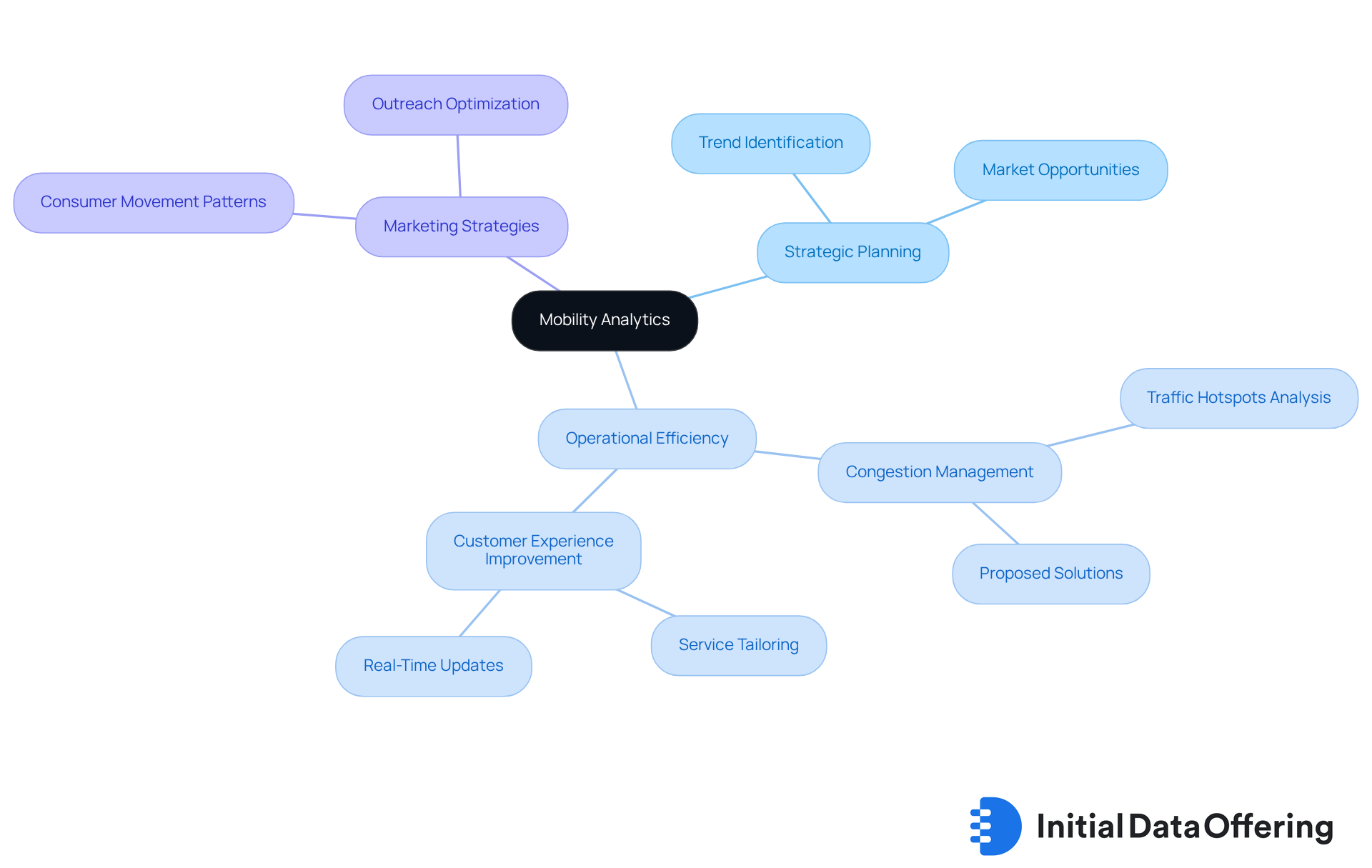
Continuous Learning: Adapting to Evolving Mobility Data Trends
In the dynamic field of mobility information, ongoing education is crucial for professionals to stay aligned with emerging trends and technologies. What does this mean for your career? Participating in professional growth through customized training programs, industry conferences, and workshops not only enhances practitioners' skills but also fosters adaptability in a rapidly evolving environment. Organizations that prioritize a culture of continuous learning empower their teams to leverage new opportunities for growth and innovation. For instance, structured upskilling programs can facilitate transitions from data analyst to data scientist roles, equipping professionals with the necessary tools to navigate complex data landscapes.
Furthermore, consider these statistics:
- 93% of workers desire employee training that is easy to complete
- 83% of marketing professionals view ongoing education as essential for career advancement
This underscores the need for accessible and engaging training options. By investing in comprehensive development initiatives, companies can enhance employee engagement and retention, ultimately driving better outcomes in mobility data. How can your organization implement these strategies to foster a culture of learning?
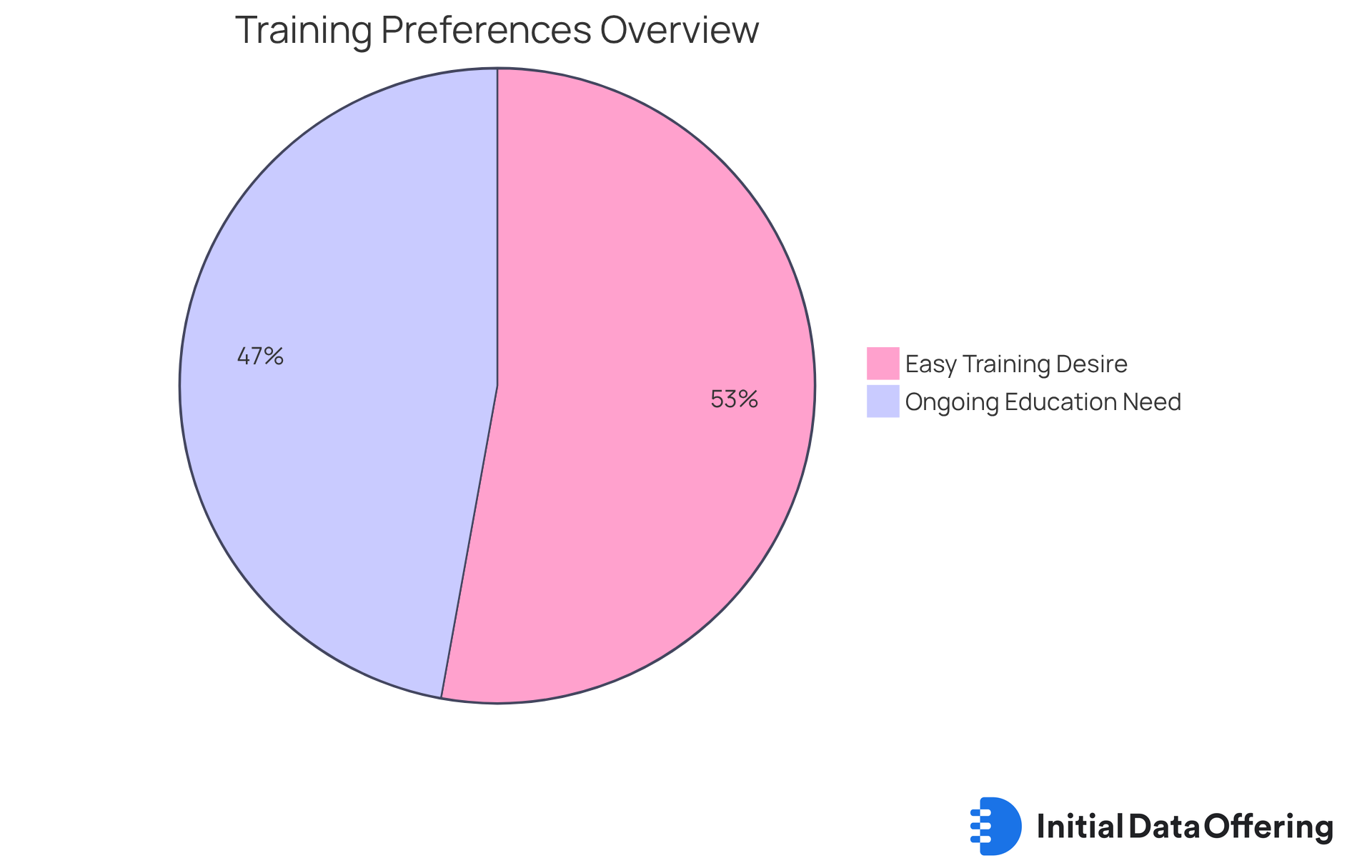
Conclusion
The exploration of mobility data reveals its transformative power for market research analysts, emphasizing the necessity of integrating high-quality datasets into strategic decision-making. Features of mobility data include its ability to provide real-time insights and comprehensive consumer behavior patterns. Advantages arise from the transportation analytics sector's substantial growth, allowing organizations to leverage these insights to adapt to ever-evolving market dynamics. Benefits include enhanced understanding of consumer preferences and improved strategic responses to market changes.
Key insights discussed throughout the article highlight the importance of data accuracy, the role of machine learning in refining analysis, and the ethical considerations surrounding mobility data usage. Furthermore, the adoption of open data standards and distributed databases fosters collaboration and accessibility, enabling analysts to overcome challenges in interpreting complex datasets. Ultimately, these elements converge to underscore the critical role that mobility data plays in driving informed strategies across various sectors.
As the landscape of mobility data continues to evolve, embracing continuous learning and innovative practices will be essential for market research professionals. By prioritizing ethical standards, enhancing data accuracy, and leveraging advanced analytical techniques, organizations can not only improve their operational strategies but also contribute to a more sustainable and efficient transportation ecosystem. The time to act is now—harness the power of mobility data to unlock new opportunities and drive impactful change in your organization.
Frequently Asked Questions
What is the Initial Data Offering (IDO)?
The Initial Data Offering (IDO) is a centralized hub for accessing high-quality transportation datasets, which are essential for market research professionals. It includes various types of datasets such as alternative information, fundamentals information, and ESG information.
Why is mobility data important?
Mobility data is crucial for interpreting movement trends and understanding consumer behavior. It enables organizations to gain insights into market dynamics and respond effectively to changing consumer needs.
How does IDO benefit market research professionals?
By leveraging IDO's services, market research professionals can enhance their evaluations, extract actionable insights, and inform strategic decisions, which is vital as the transportation information analytics sector is expected to grow significantly by 2025.
What role does data accuracy play in transportation analysis?
Data accuracy is essential in transportation analysis as it directly impacts the reliability of conclusions drawn from the information. Best practices in information gathering, validation, and monitoring are necessary to ensure the mobility data reflects genuine patterns.
How can analysts ensure the accuracy of mobility data?
Analysts can ensure accuracy by conducting regular audits, cross-verifying data with trusted sources, and employing effective information management practices to enhance the reliability of market insights.
What is the significance of machine learning in mobility data analysis?
Machine learning transforms transportation information analysis by allowing researchers to identify complex patterns and trends that traditional techniques may overlook. It enables predictive modeling and clustering, improving decision-making processes.
Can you provide an example of machine learning's impact on transportation?
Yes, Singapore's Intelligent Transport System used predictive modeling to reduce wait times at intersections by 40.64% and decrease vehicle emissions by 21.48%. Similarly, Pittsburgh's Surtrac system achieved a 25.79% reduction in average travel durations.
How accurate are machine learning algorithms in detecting traffic congestion?
Machine learning algorithms have achieved over 90% accuracy in detecting traffic congestion, which allows cities to proactively manage urban movement.
What should data professionals consider when analyzing mobility data?
Data professionals should consider adopting predictive modeling techniques to enhance their capacity to extract actionable insights and drive informed strategies in urban planning.